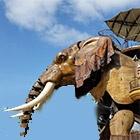Just last week I wrote about how investing in large and successful businesses is generally a happier affair than messing with sickly small-caps, and to prove the point I offer Exhibit A: Northamber.
If you’ve been around the value investing blogs over the last few years you’ve probably already heard of Northamber. I owned it myself for a year or so back in 2008/9 and Richard Beddard over at Interactive Investor has owned it too.
It trades well below book value and tangible book value and has tons of cash, all of which are of interest to deep value investors.
So what’s the link to Berkshire Hathaway?
Of course, they don’t look very similar today, but the Berkshire of 1950s vintage would, I suspect, look eerily similar to Northamber.
Comparing the Northamber of today to the 1950s Berkshire Hathaway:
- They’re both companies with long histories, steady sales and well known names in their industries (cotton mills for Berkshire and IT distribution for Northamber).
- They both operate in fiercely price competitive industries without a competitive advantage.
- They're facing decline in their core business with no obvious alternative places to reinvest retained earnings.
Berkshire Hathaway faced inevitable decline and probably should have closed long before Buffett eventually did close the old textile part of the business in 1985. It may have only lasted that long with help from the more successful parts of the business that Buffett had bolted on during his early ownership.
Northamber has no equivalent knight in shining armour.
Priced for its death-bed
The market seems to agree and has Northamber priced for its death-bed. For example, the market cap stands at just over £12 million while tangible book value is twice that, there is zero debt and £13 million cold hard cash in the bank too.
If you shut the business today you might get something like 100% of the face value of its cash, 75% for receivables and 50% for inventory. If we’re really pessimistic we can assign a value of zero to fixed assets (which is overly pessimistic as those assets are freehold properties valued at £2.5 million). Add that lot up and subtract 100% of all liabilities and, as at the latest interim report, the total would come to just under £14 million.
This means that the market cap is…








